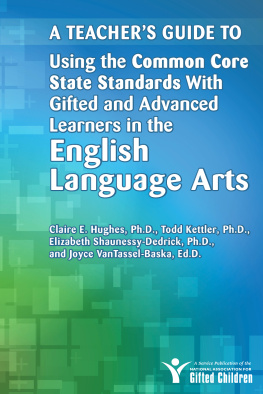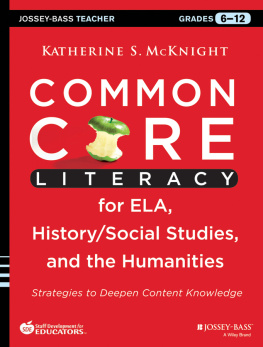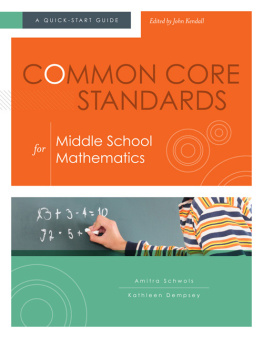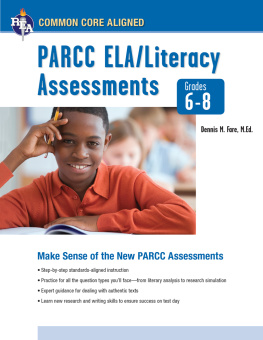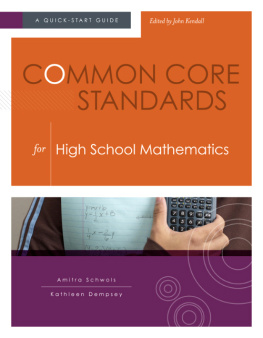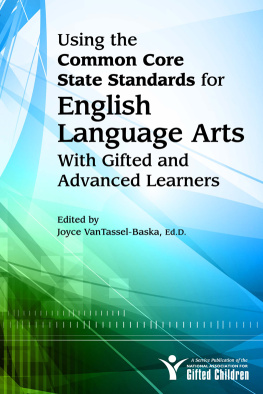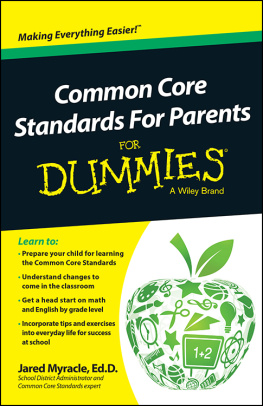MAKING THE
Common Core
Standards Work

MAKING THE
Common Core
Standards Work
Using Professional Development to Build World-Class Schools
ROBERT J. MANLEY RICHARD J. HAWKINS
Foreword by DAN DOMENECH


FOR INFORMATION
Corwin
A SAGE Company
2455 Teller Road
Thousand Oaks, California 91320
(800) 233-9936
www.corwin.com
SAGE Publications Ltd.
1 Olivers Yard
55 City Road
London, EC1Y 1SP
United Kingdom
SAGE Publications India Pvt. Ltd.
B 1/I 1 Mohan Cooperative Industrial Area
Mathura Road, New Delhi 110 044
India
SAGE Publications Asia-Pacific Pte. Ltd.
3 Church Street
#10-04 Samsung Hub
Singapore 049483
Acquisitions Editor: Arnis Burvikovs
Associate Editor: Desire A. Bartlett
Editorial Assistant: Kim Greenberg
Production Editor: Veronica Stapleton
Copy Editor: Pam Schroeder
Typesetter: Hurix Systems Pvt. Ltd
Proofreader: Dennis W. Webb
Indexer: Jean Casalegno
Cover Designer: Michael Dubowe
Permissions Editor: Karen Ehrmann
Copyright 2013 by Corwin
All rights reserved. When forms and sample documents are included, their use is authorized only by educators, local school sites, and/or noncommercial or nonprofit entities that have purchased the book. Except for that usage, no part of this book may be reproduced or utilized in any form or by any means, electronic or mechanical, including photocopying, recording, or by any information storage and retrieval system, without permission in writing from the publisher.
All trade names and trademarks recited, referenced, or reflected herein are the property of their respective owners who retain all rights thereto.
The NGA Center for Best Practices (NGA Center) and the Council of Chief State School Officers (CCSSO) hereby grant a limited, non-exclusive, royalty-free license to copy, publish, distribute, and display the Common Core State Standards for purposes that support the Common Core State Standards Initiative. These uses may involve the Common Core State Standards as a whole or selected excerpts or portions.
NGA Center/CCSSO shall be acknowledged as the sole owners and developers of the Common Core State Standards, and no claims to the contrary shall be made. Any publication or public display shall include the following notice: Copyright 2010. National Governors Association Center for Best Practices and Council of Chief State School Officers. All rights reserved.
Printed in the United States of America
Library of Congress Cataloging-in-Publication Data
A catalog record of this book is available from the Library of Congress.
9781452258577
This book is printed on acid-free paper.
12 13 14 15 16 10 9 8 7 6 5 4 3 2 1
Contents
Foreword
Dan Domenech
Dedication
W e would like to thank Kay Manley and Sue Hawkins for their love, support, and infinite patience throughout the process of writing this book.
Bob dedicates this book to Kathryn and his children, Michael and Linda Schechter Manley, and their children, Zachary, Heather, Ethan, and Tyler and to Patrick and Barbara Harrison Manley, and their children, Jillian and Ryan. They and their cohorts are the future of our nation and our global society. We spent many hours in this labor of love in hopes that we could make a difference in the lives of teachers and students. We learned school leaders and teachers need the same caring, loving, and demanding family that children need. Much of what we propose in this book relies upon trust in each other as professionals who see our own fallibility and vulnerability as we try to improve learning for all children.
Rich dedicates this book to his wife Sue, his daughter Jacqui, son Bob and his lovely wife Jess, and my beautiful, bright, and loving grandchildren Jack, Camryn, and Jamison. The truth be told, having grandchildren just entering or about to enter our public schools was a very real motivator for writing this book. We hope this book reveals new pathways for educational leaders and teachers in the United States to succeed where others have failed. We hope they defy gravity and inertia and use the Common Core State Standards (CCSS) as an opportunity to discuss and challenge all of the political hyperbole and the preconceived notions about education that our nation holds. We hope that they integrate the common core standards into their daily lessons and develop world-class schools systemically. Our nation and grandkids are depending upon you!
Foreword
T he United States of America are not united when it comes to education. We have 50 states with 50 sets of standards for their educational systems. Admittedly, the Constitution of our great country placed the obligation for the development and administration of public schools on the backs of the states. Consequently, our 50 states have fiercely guarded that prerogative in the past and, until recently, fought off attempts by our federal government to interfere in education matters.
It was Lyndon Johnson who, in 1965, shepherded the passage of the Elementary and Secondary Education Act (ESEA) through Congress, signaling the first large-scale incursion of the federal government into education. Under the civil rights banner, ESEA attempted to equalize the playing field for the children of poverty. Federal dollars would flow to school districts with large concentrations of poor children to ensure that they would have an equal opportunity to receive a quality education. For more than 30 years, school district accountability for the funds received was restricted to reports about how federal funds were spent. The districts and schools receiving federal dollars had annual reports to file with the Department of Education (DOE). With the reauthorization of ESEA, popularly known as No Child Left Behind, the federal role expanded to include all schools. Today, every public school in America must make Adequate Yearly Progress on state exams and evaluate teachers according to student performance on state and local tests.
In recent years, the specter of global competition has extended to education with international academic competitions that do not flatter the performance of American students. By comparison to countries like Finland, Singapore, and most recently Shanghai (not a country, by the way, but a Chinese province), our students do not fare well. We can debate whether the comparisons with much smaller countries and a province are fair. At some point, we must recognize that our students participating in the Program for International Student Assessment (PISA) and Trends in International Mathematics and Science Study (TIMSS) learn in 50 states with 50 different standards. It seems obvious that we would be better off if we, like the countries we compete with, had one set of national standards. Thus, the dilemmaour states do not want the federal government imposing a set of standards, yet in addition to international competitions, there are many reasons why our schools would benefit from national standards.
The National Governors Association (NGA) and the Council of Chief State School Officers (CCSSO) have been the prime movers of the common core standards, an attempt to get all 50 states to agree to a national standard for K12 education and not one imposed by the federal government. To help expedite the process, the U.S. DOE has awarded two grants for the development of instruments that would assess student progress toward the common core standards. A number of states have adopted the standards, and many school districts are now grappling with the task of developing curriculum and instructional materials and strategies for the classroom. It is precisely at this point that Bob Manley and Rich Hawkins have authored
Next page

